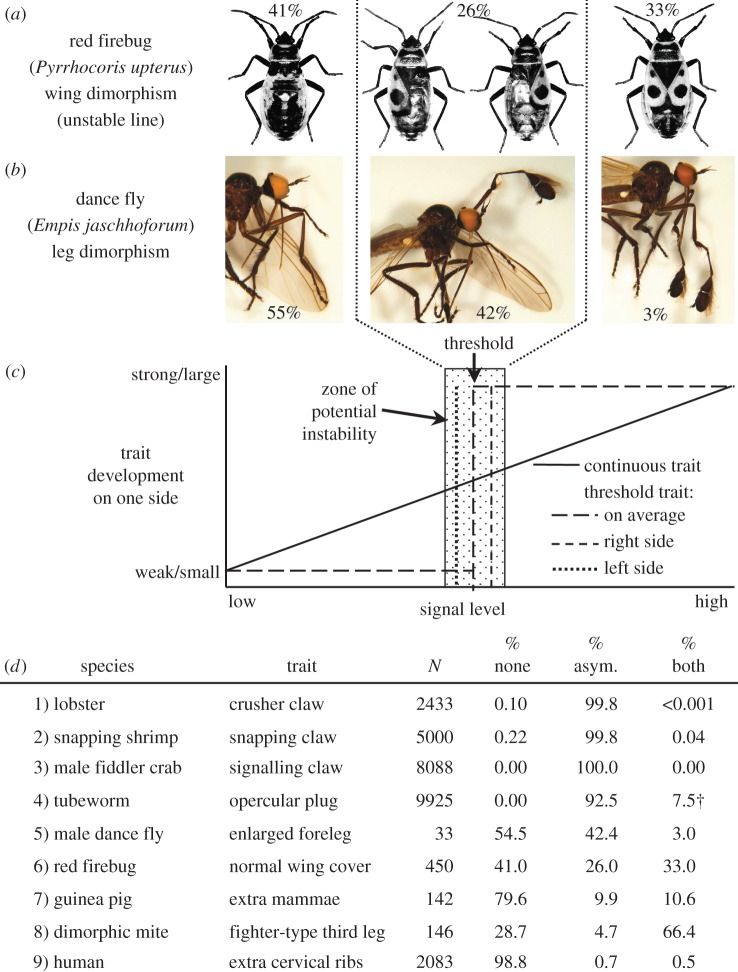Figure 4.
Normal versus anomalous random asymmetry (modified from [87]). (a) A clear example of anomalous random asymmetry in forewings of the red firebug, Pyrrhocoris apterus [88]. (b) A possible example in forelegs of the dance fly, Empis jaschhoforum [89]. (c) Hypothetical model for anomalous random asymmetries that arise due to small, random differences in signal or threshold level between the right and left sides in a threshold trait during development. (d) Examples of the gradation from clearly normal random asymmetries (1–4) to clearly anomalous (6–9), where the enlarged/extra trait may be absent (‘none’), present on either right or left at random (‘asym.’), or present on both sides (‘both’); species and sources: (1) Homarus americanus [90], (2) Synalpheus longicarpus [91], (3) Uca lactea [92], (4) Hydroides ezoensis [93] († Individuals bearing two opercular plugs vary significantly, from 1% to 30% depending on season; those bearing two plugs appeared to be transitioning from right- to left-sided or vice-versa as one was typically ‘more advanced’ and eventually autotomized), (5) Empis jaschhoforum [89], (6) Pyrrhocoris apterus (unstable line) [94], (7) Cavia porcellus [95], (8) Sancassania berlesei [96]. (9) Homo sapiens [97]. Empis jaschhoforum lies ambiguously between ‘normal’ and ‘anomalous’. Original photographs from [88,89], with permission. (Online version in colour.)

